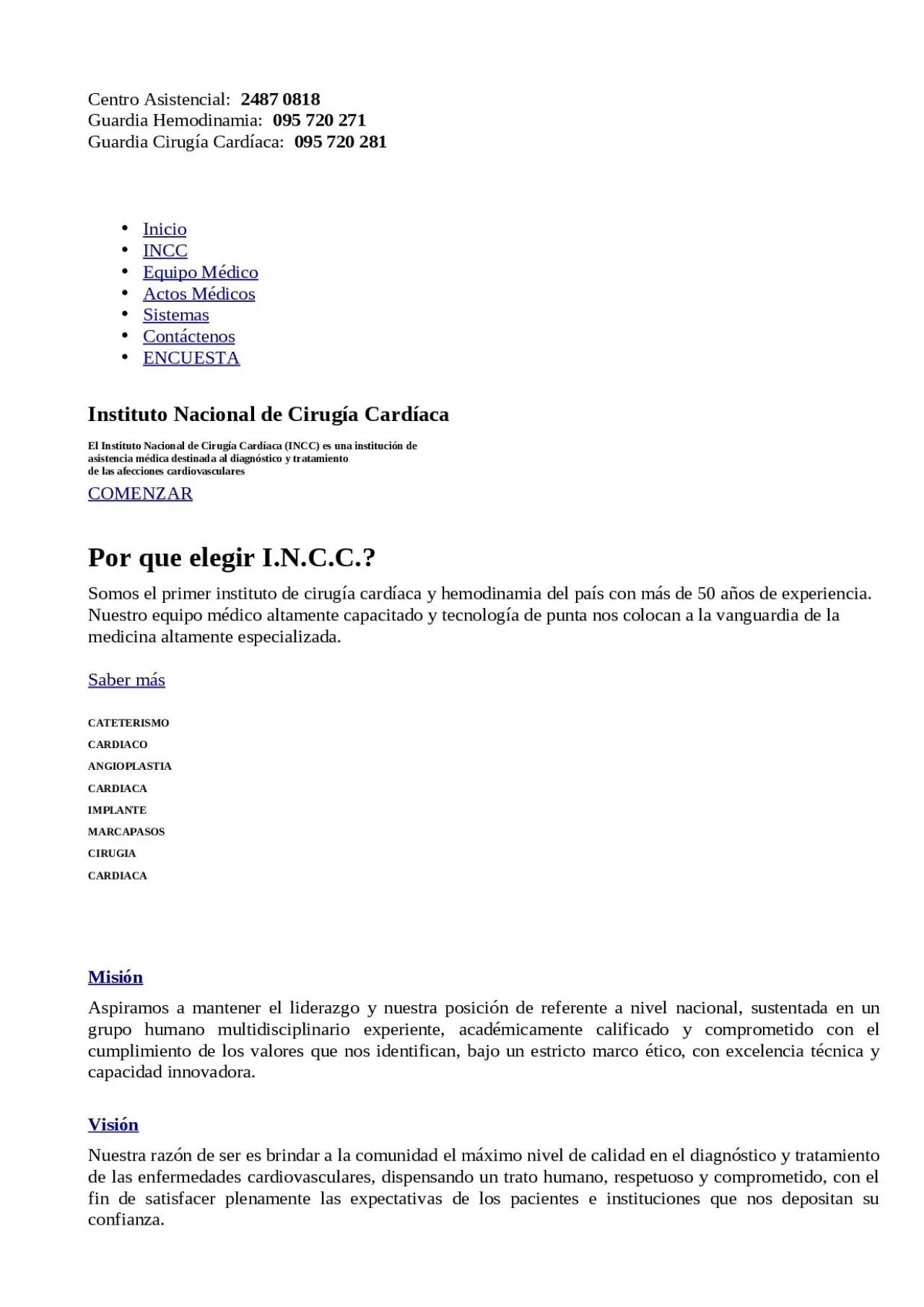

aortopathy in bicuspid aortic valve patients increase the risk of aortopathy in their first degree relatives Ana Zuasnabar Rodolfo Citro Michele ID: 935950
Download Presentation The PPT/PDF document "Does the presence of" is the property of its rightful owner. Permission is granted to download and print the materials on this web site for personal, non-commercial use only, and to display it on your personal computer provided you do not modify the materials and that you retain all copyright notices contained in the materials. By downloading content from our website, you accept the terms of this agreement.
Slide1
Does the presence of aortopathy in bicuspid aortic valve patients increase the risk of aortopathy in their first degree relatives?Ana Zuasnabar, Rodolfo Citro, Michele Bellino, Hector Michelena, Gabriel Parma, Simon Body, Lucía Florio, Victor Dayan.
Description
IntroductionFirst degree relatives (FDR) of bicuspid aortic valve (BAV) patients are at increased risk for acquiring BAV or aortopathy. Although the risk for a FDR to have BAV has been assessed, there is little information as to the risk for acquiring aortopathy. Purpose To evaluate the risk for acquiring aortopathy in FDR with tricuspid aortic valve (TAV) of BAV patients, depending on whether the proband with BAV have associated aortopathy or not.
ConclusionsFDR with TAV of patients with BAV and aortopathy have increased risk for aortopathy of the root and ascending aorta.
Methods
In this international multicentric prospective study, patients with BAV were classified according to associated aortopathy or not. Aortopathy was defined as : annulus ≥ 14 mm/m2; root ≥ 20 mm/m2; sino-tubular junction (STJ) ≥ 16 mm/m2; ascending aorta (AA) ≥ 17 mm/m2. FDR of BAV patients without (Group 1) and with aortopathy (Group 2) were included. Clinical and echocardiographic evaluation was performed on all included FDR.
Results We included 107 FDR, only 4 (4%) had BAV. FDR from group 2 had larger aortic root and AA (Table). By indexed aortic diameters, FDR from group 2 had higher incidence for root aortopathy (Figure). Group 2 was predictor for root (OR=19.6[95%CI:1.33-333], p=0.001) and AA aortopathy (OR=4.2[95%CI:1.2-14.1], p=0.045).
Group 1 (50)Group 2 (53)pAge (SD)36.5 (17.9)36.1 (18.5)0.903Female (%)22 (44)27 (51)0.481Height (cm) (SD)163.2 (14.9)162.2 (21.7)0.789Weight (kg) (SD)67.2 (17.5)69.9 (19.5)0.449Mild aortic stenosis (%)2 (4)1 (1.9)0.535Mild aortic regurgitation (%)8 (16)9 (17.3)0.600Annulus (mm) (SD)22.5 (3.7)23.0 (3.9)0.505Root (mm) (SD)29.1 (4.2)31.4 (4.9)0.010 *STJ (mm) (SD)26.2 (4.3)26.9 (4.8)0.427AA (mm) (SD)27.9 (4.2)29.7 (4.5)0.046 *
Proband
with
Aortopathy
*
*
Slide2